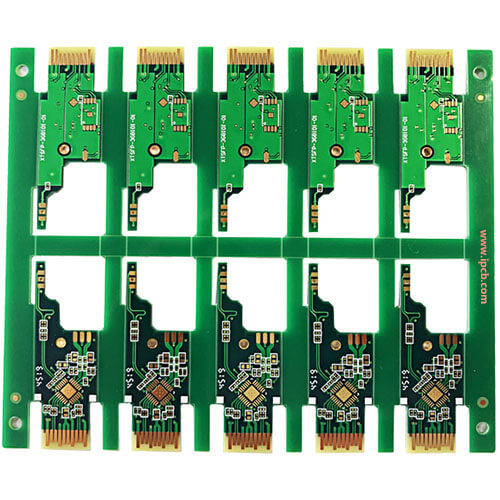通過以上對過孔寄生特性的分析, 我們可以在 高速PCB設計, 看似簡單的通孔往往會給電路設計帶來很大的負面影響. 為了减少過孔寄生效應引起的不利影響, the follow在裡面g can be done in the design:

(1) Choose a reasonable via size. 對於多層一般密度 PCB設計, 最好使用0.25毫米/0.51毫米/0.91mm (drilled holes/墊/POWER isolation area) 過孔; for some high-density PCBs, 0.20毫米/0.46也可用於mm的過孔/0.86毫米, 您也可以嘗試非通孔; 用於電源或接地過孔, you can consider using a larger size to reduce impedance;
(2) The larger the POWER isolation area, 更好, 考慮到PCB上的通孔密度, generally D1=D2+0.41;
(3) The signal traces on the PCB should not be changed as much as possible, which means that vias should be reduced as much as possible;
(4) The use of a thinner PCB is beneficial to reduce the two parasitic parameters of the via;
(5) The power and ground pins should be made via holes nearby. 通孔和引脚之間的導線越短, 更好, 因為它們會新增電感. 同時, the power and ground leads should be as thick as possible to reduce impedance;
(6) Place some grounding vias near the vias of the signal layer to provide a short-distance loop for the signal.
當然, 設計時需要詳細分析具體問題. 同時考慮成本和訊號質量, in 高速PCB設計, 設計者總是希望通孔越小, 更好, 這樣可以在電路板上留下更多的佈線空間. 此外, 通孔越小, 寄生電容越小, 更適用於高速電路. 在高密度 PCB設計, 非通孔的使用和通孔尺寸的减小也帶來了成本的新增, 過孔的尺寸不能無限减小. 它受到PCB製造商鑽孔和電鍍工藝的影響. 在設計時應平衡考慮科技限制 高速PCB vias.